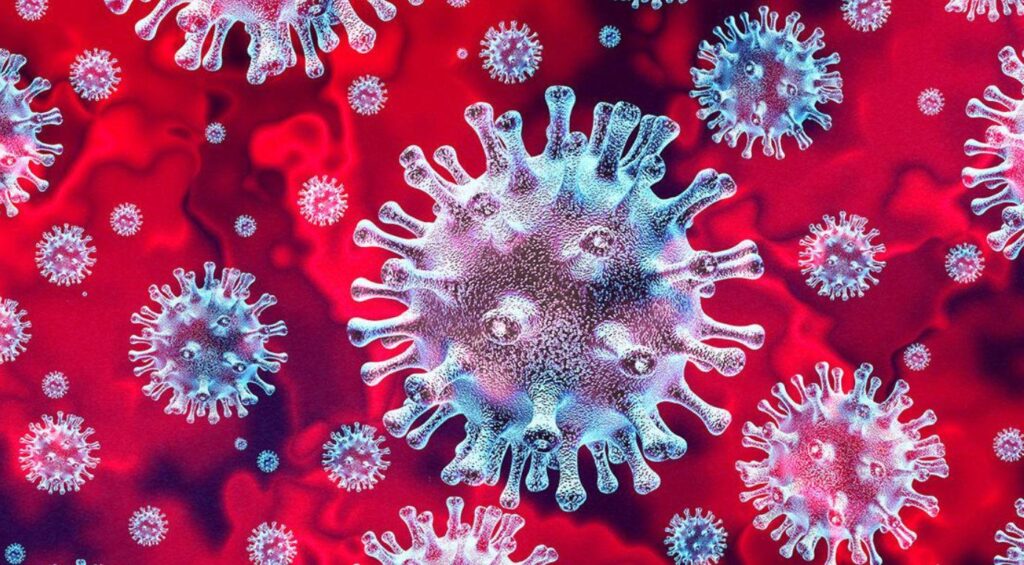[tatsu_section bg_color= “” bg_image= “” bg_repeat= “no-repeat” bg_attachment= ‘{“d”:”scroll”}’ bg_position= ‘{“d”:”top left”}’ bg_size= ‘{“d”:”cover”}’ bg_animation= “none” padding= ‘{“d”:”90px 0px 90px 0px”}’ margin= ‘{“d”:”0px 0px 0px 0px”}’ bg_video_mp4_src= “” bg_video_ogg_src= “” bg_video_webm_src= “” overlay_color= “” overlay_blend_mode= “none” section_height_type= “auto” custom_height= ‘{“d”:””}’ vertical_align= “center” top_divider= “none” top_divider_zindex= “9999” bottom_divider_zindex= “9999” bottom_divider= “none” top_divider_height= ‘{“d”:”100″}’ top_divider_position= “above” bottom_divider_height= ‘{“d”:”100″}’ bottom_divider_position= “below” top_divider_color= “#ffffff” bottom_divider_color= “#ffffff” invert_top_divider= “0” invert_bottom_divider= “0” flip_top_divider= “0” flip_bottom_divider= “0” section_id= “” section_class= “” section_title= “” offset_value= “” full_screen_header_scheme= “background–dark” overflow= “” z_index= “0” hide_in= “0” animate= “1” animation_type= “none” animation_delay= “0” animation_duration= “300” border_style= ‘{“d”:”solid”,”l”:”solid”,”t”:”solid”,”m”:”solid”}’ border= ‘{“d”:”0px 0px 0px 0px”}’ border_color= “” border_radius= “” box_shadow= “0px 0px 0px 0px rgba(0,0,0,0)” key= “BJWbacMyBX”][tatsu_row full_width= “0” bg_color= “” border_style= ‘{“d”:”solid”,”l”:”solid”,”t”:”solid”,”m”:”solid”}’ border= ‘{“d”:”0px 0px 0px 0px”}’ border_color= “” no_margin_bottom= “0” equal_height_columns= “0” gutter= “medium” column_spacing= “px” fullscreen_cols= “0” swap_cols= “0” padding= ‘{“d”:”0px 0px 0px 0px”}’ margin= ‘{“d”:”0px 0px”}’ row_id= “” row_class= “” box_shadow= “0px 0px 0px 0px rgba(0,0,0,0)” border_radius= “0px” hide_in= “0” animate= “1” animation_type= “none” animation_delay= “0” animation_duration= “300” layout= “1/1” key= “Hyeb6qzkS7”][tatsu_column bg_color= “” bg_image= “” bg_repeat= “no-repeat” bg_attachment= “scroll” bg_position= ‘{“d”:”top left”}’ bg_size= ‘{“d”:”cover”}’ padding= ‘{“d”:”0px 0px 0px 0px”}’ margin= ‘{“d”:””}’ border_style= ‘{“d”:”solid”,”l”:”solid”,”t”:”solid”,”m”:”solid”}’ border= ‘{“d”:”0px 0px 0px 0px”}’ border_color= “” border_radius= “0px” box_shadow_custom= “0px 0px 0px 0px rgba(0,0,0,0)” bg_video_mp4_src= “” bg_video_ogg_src= “” bg_video_webm_src= “” overlay_color= “” overlay_blend_mode= “none” animate_overlay= “none” link_overlay= “” vertical_align= “none” sticky= “0” offset= ‘{“d”:”0px 0px”}’ column_parallax= “0” column_width= ‘{“d”:100,”l”:100,”t”:100,”m”:100}’ column_mobile_spacing= “0” image_hover_effect= “none” column_hover_effect= “none” hover_box_shadow= “0px 0px 0px 0px rgba(0,0,0,0)” overflow= “” col_id= “” column_class= “” top_divider= “none” top_divider_height= ‘{“d”:”100″,”m”:”0″}’ top_divider_color= “#ffffff” flip_top_divider= “0” top_divider_zindex= “9999” bottom_divider= “none” bottom_divider_height= ‘{“d”:”100″,”m”:”0″}’ bottom_divider_color= “#ffffff” flip_bottom_divider= “0” bottom_divider_zindex= “9999” left_divider= “none” left_divider_width= ‘{“d”:”50″,”m”:”0″}’ left_divider_color= “#ffffff” invert_left_divider= “0” left_divider_zindex= “9999” right_divider= “none” right_divider_width= ‘{“d”:”50″,”m”:”0″}’ right_divider_color= “#ffffff” invert_right_divider= “0” right_divider_zindex= “9999” z_index= “0” hide_in= “0” animate= “1” animation_type= “none” animation_delay= “0” animation_duration= “300” layout= “1/1” key= “H1ZacGySQ”][tatsu_inline_text max_width= ‘{“d”:”100″}’ wrap_alignment= “center” text_alignment= ‘{“d”:”left”}’ margin= ‘{“d”:”0px 0px 50px 0px “}’ bg_color= “” typography= ‘{“d”:””}’ box_shadow= “0px 0px 0px 0px rgba(0,0,0,0)” padding= ‘{“d”:”0px 0px 0px 0px”}’ border_style= ‘{“d”:”solid”,”l”:”solid”,”t”:”solid”,”m”:”solid”}’ border= ‘{“d”:”0px 0px 0px 0px”}’ border_color= “” border_radius= “0px” hide_in= “” css_id= “” css_classes= “” animate= “1” animation_type= “none” animation_delay= “0” animation_duration= “300” key= “HyWpgF8B7”]
Proactive steps to help prevent the spread of germs in facilities
By now, we are all aware that a novel coronavirus has arrived in the U.S. The 2019 novel coronavirus (COVID-19) outbreak that started in Wuhan, China in December 2019 has infected almost 25,000 people in over 25 countries—including 11 confirmed cases in the U.S. as of February 5, 2020 according to the U.S. Centers for Disease Control (CDC) and the World Health Organization (WHO). As public health leaders across the world have jumped into action, there is still much to learn about how this outbreak will play out. While the CDC still considers the risk level to be low in the U.S., concern still exists and many facility managers of schools to businesses are wondering what, if anything, they should be doing. Fortunately, there are simple and proactive steps that can be taken to help prevent the spread of germs in facilities amid concern over COVID-19. To this end, I recommend a three-part approach to implementing a robust and effective
program. It is also important to point out that facility managers can use these same behaviors
and practices to prevent the spread of germs every day and in readiness for the next outbreak,
even when COVID-19 isn’t a concern.
[/tatsu_inline_text][tatsu_image image= “https://isgserves.com/wp-content/uploads/2020/03/Corona-Virus-Cleaning.jpg” image_varying_size_src= “” alignment= “none” border_width= “0” border_color= “” id= “5148” size= “full” adaptive_image= “0” max_width= ‘{“d”:”100%”}’ rebel= “0” width= ‘{“d”:”100%”}’ shadow= “none” custom_shadow= “0px 0px 0px 0px rgba(0,0,0,0)” drop_shadow= “drop-shadow(0px 0px 0px rgba(0,0,0,0))” border_radius= “0px” lazy_load= “1” placeholder_bg= ‘{“id”:”palette:4″,”color”:”rgba(245,246,250,1)”}’ offset= ‘{“d”:”0px 0px”}’ lightbox= “0” link= “” new_tab= “0” hide_in= “” css_id= “” css_classes= “” animate= “1” animation_type= “none” animation_delay= “0” animation_duration= “300” padding= ‘{“d”:””}’ margin= ‘{“d”:””}’ key= “S1UXZFLrX”][/tatsu_image][tatsu_inline_text max_width= ‘{“d”:”100″}’ wrap_alignment= “center” text_alignment= ‘{“d”:”left”}’ margin= ‘{“d”:”0px 0px 60px 0px “}’ bg_color= “” typography= ‘{“d”:””}’ box_shadow= “0px 0px 0px 0px rgba(0,0,0,0)” padding= ‘{“d”:”0px 0px 0px 0px”}’ border_style= ‘{“d”:”solid”,”l”:”solid”,”t”:”solid”,”m”:”solid”}’ border= ‘{“d”:”0px 0px 0px 0px”}’ border_color= “” border_radius= “0px” hide_in= “” css_id= “” css_classes= “” animate= “1” animation_type= “none” animation_delay= “0” animation_duration= “300” key= “S1TuM9LBX”]
Part 1 – Public health basics:
These activities form the foundation of any public health and
infection prevention plan. Cleaning teams likely understand they are responsible for cleaning
and disinfecting surfaces, but they may not realize they can also spread germs. Encourage the
following behaviors and practices with your staff to help prevent germs from coming into and
spreading in your facility:
• Get vaccinated: In the case of COVID-19, it’s not available yet, but staff should be up to
date on their vaccines. Learn more about what vaccines the CDC recommends for adults
here.
• Keep hands clean: Wash hands frequently with soap and water for at least 20 seconds. Use
an alcohol-based hand sanitizer if soap and water are not available.
• Cover coughs and sneezes: Cover your mouth and nose with a tissue or your sleeve (not
your hands) when coughing or sneezing. Dispose of tissue properly and perform hand
hygiene.
• Stay home when sick: Remain at home and avoid contact with others when sick, except if
needing to visit a medical provider. Do not travel or go to work while sick.
[/tatsu_inline_text][/tatsu_column][/tatsu_row][tatsu_row full_width= “0” bg_color= “” border_style= ‘{“d”:”solid”,”l”:”solid”,”t”:”solid”,”m”:”solid”}’ border= ‘{“d”:”0px 0px 0px 0px”}’ border_color= “” no_margin_bottom= “0” equal_height_columns= “0” gutter= “medium” column_spacing= “px” fullscreen_cols= “0” swap_cols= “0” padding= ‘{“d”:”0px 0px 0px 0px”}’ margin= ‘{“d”:”0px 0px”}’ row_id= “” row_class= “” box_shadow= “0px 0px 0px 0px rgba(0,0,0,0)” border_radius= “0px” hide_in= “0” animate= “1” animation_type= “none” animation_delay= “0” animation_duration= “300” layout= “1/1” key= “Sye6-bKLHX”][tatsu_column bg_color= “” bg_image= “” bg_repeat= “no-repeat” bg_attachment= “scroll” bg_position= ‘{“d”:”top left”}’ bg_size= ‘{“d”:”cover”}’ padding= ‘{“d”:”0px 0px 0px 0px “}’ margin= ‘{“d”:””}’ border_style= ‘{“d”:”solid”,”l”:”solid”,”t”:”solid”,”m”:”solid”}’ border= ‘{“d”:”0px 0px 0px 0px”}’ border_color= “” border_radius= “0px” box_shadow_custom= “0px 0px 0px 0px rgba(0,0,0,0)” bg_video_mp4_src= “” bg_video_ogg_src= “” bg_video_webm_src= “” overlay_color= “” overlay_blend_mode= “none” animate_overlay= “none” link_overlay= “” vertical_align= “none” sticky= “0” offset= ‘{“d”:”0px 0px”}’ column_parallax= “0” column_width= ‘{“d”:100,”l”:100,”t”:100,”m”:100}’ column_mobile_spacing= “0” image_hover_effect= “none” column_hover_effect= “none” hover_box_shadow= “0px 0px 0px 0px rgba(0,0,0,0)” overflow= “” col_id= “” column_class= “” top_divider= “none” top_divider_height= ‘{“d”:”100″,”m”:”0″}’ top_divider_color= “#ffffff” flip_top_divider= “0” top_divider_zindex= “9999” bottom_divider= “none” bottom_divider_height= ‘{“d”:”100″,”m”:”0″}’ bottom_divider_color= “#ffffff” flip_bottom_divider= “0” bottom_divider_zindex= “9999” left_divider= “none” left_divider_width= ‘{“d”:”50″,”m”:”0″}’ left_divider_color= “#ffffff” invert_left_divider= “0” left_divider_zindex= “9999” right_divider= “none” right_divider_width= ‘{“d”:”50″,”m”:”0″}’ right_divider_color= “#ffffff” invert_right_divider= “0” right_divider_zindex= “9999” z_index= “0” hide_in= “0” animate= “1” animation_type= “none” animation_delay= “0” animation_duration= “300” layout= “1/1” key= “BJabWKLHX”][tatsu_inline_text max_width= ‘{“d”:”100″}’ wrap_alignment= “center” text_alignment= ‘{“d”:”left”}’ margin= ‘{“d”:”0px 0px 30px 0px”}’ bg_color= “” typography= ‘{“d”:””}’ box_shadow= “0px 0px 0px 0px rgba(0,0,0,0)” padding= ‘{“d”:”0px 0px 0px 0px”}’ border_style= ‘{“d”:”solid”,”l”:”solid”,”t”:”solid”,”m”:”solid”}’ border= ‘{“d”:”0px 0px 0px 0px”}’ border_color= “” border_radius= “0px” hide_in= “” css_id= “” css_classes= “” animate= “1” animation_type= “none” animation_delay= “0” animation_duration= “300” key= “SyXGZA8S7”]
Part 2 – Environmental stewardship:
From common cold and flu viruses to COVID-19, cleaning
and disinfection are critical to prevent the spread of germs via surfaces. In fact, almost 80% of
infectious diseases are transmitted via contact or touch and surfaces act as reservoirs for germ
transfer to hands if they aren’t cleaned and disinfected as cited in The Secret Life of Germs by
Philip M. Tierno Jr., Ph.D. If you are doing the job right, you are helping to prevent the spread of
pathogens and thus breaking the chain of infection. The following steps will ensure your
cleaning and disinfection program has a strong foundation.
• Specify procedures: A strong cleaning program has written procedures in place that specify
cleaning processes for different areas in your facility. Each procedure should include what
surfaces need to be cleaned, who is responsible for each area, the products to be used to
clean each surface. Other product details should include the directions for use, the contact
(or dwell) time, details on how to avoid cross contamination by cleaning from clean to
dirty. Update procedures each time a new product is introduced or a best practice is
identified.
• Products to use: Make sure that disinfectants have EPA-approved claims against pathogens
that cause illness or concern in your facility. These may include cold viruses, influenza,
norovirus, or MRSA. In the case of COVID-19, the EPA’s Emerging Viral Pathogen policy
allows for the quick determination of products that have demonstrated effectiveness
against viruses similar to the emerging virus. Check your manufacturer’s website or contact
your disinfectant manufacturer if you are unsure of claims.
• Educate and engage your staff: Ensure your cleaning staff are trained adequately on your
facility’s cleaning and disinfecting procedures. In addition, engage your employees as
engaged employees often have higher performance. For more on developing and
sustaining employee engagement, click here.
[/tatsu_inline_text][tatsu_inline_text max_width= ‘{“d”:”100″}’ wrap_alignment= “center” text_alignment= ‘{“d”:”left”}’ margin= ‘{“d”:”0px 0px 30px 0px”}’ bg_color= “” typography= ‘{“d”:””}’ box_shadow= “0px 0px 0px 0px rgba(0,0,0,0)” padding= ‘{“d”:”0px 0px 0px 0px”}’ border_style= ‘{“d”:”solid”,”l”:”solid”,”t”:”solid”,”m”:”solid”}’ border= ‘{“d”:”0px 0px 0px 0px”}’ border_color= “” border_radius= “0px” hide_in= “” css_id= “” css_classes= “” animate= “1” animation_type= “none” animation_delay= “0” animation_duration= “300” key= “ByHSW08SX”]
Part 3 –Ensure ongoing quality and preparedness:
Here are two additional practices that
facility leaders should tackle to be adequately prepared to prevent illness and outbreaks:
• Written cleaning program policy: Policies are overarching documents that identify key
components of your cleaning program. Policies should outline how often procedures will
be reviewed and updated, what procedures should be in place, and the frequency in which
employees will receive training and feedback on procedures.
• Outbreak preparedness procedure: Ensure you have an outbreak preparedness procedure
in place for when outbreaks do impact your facility. Your plan should be separate from
your everyday preventative cleaning procedures and cover the extra measures that need to
be taken. These include helping employees understand the importance of identifying the
signs and symptoms of any outbreak infection, knowing the correct personal protective
equipment (PPE) to wear if needed, how germs are generally transmitted, and how to
determine if different products need to be used.
Once the behaviors and practices above are in place, facility managers should feel confident in
their ability to take on any infectious disease challenge, whether it be COVID-19, a spike in flu
rates, or the next new pathogen of concern to come our way.
[/tatsu_inline_text][/tatsu_column][/tatsu_row][/tatsu_section]

